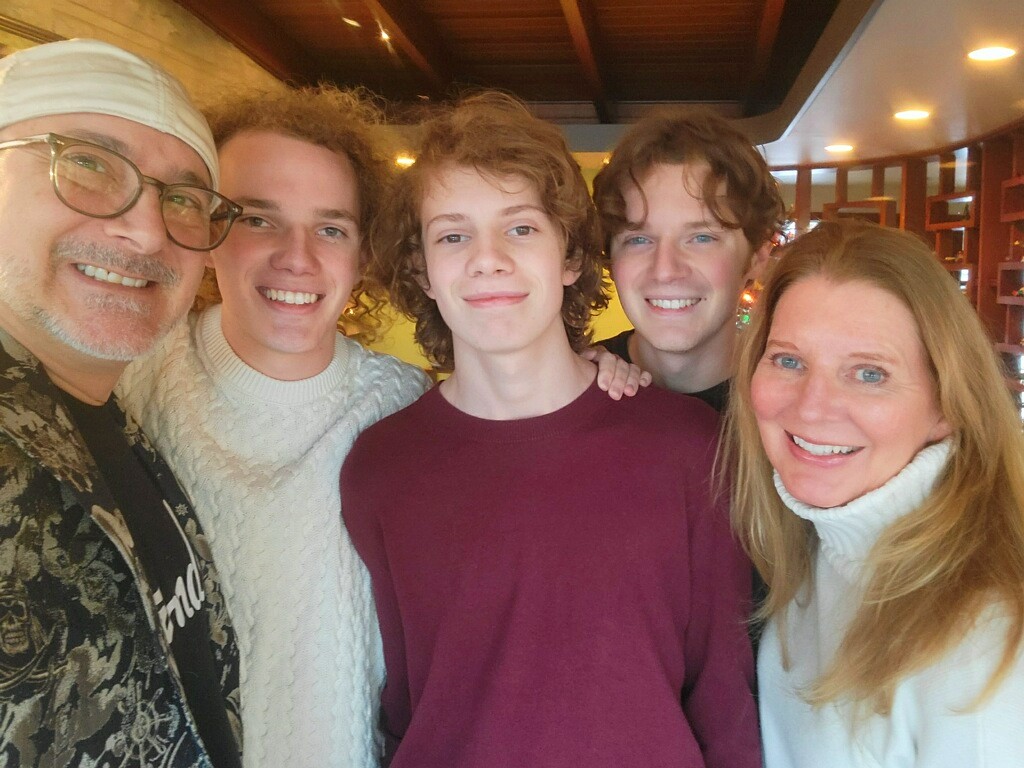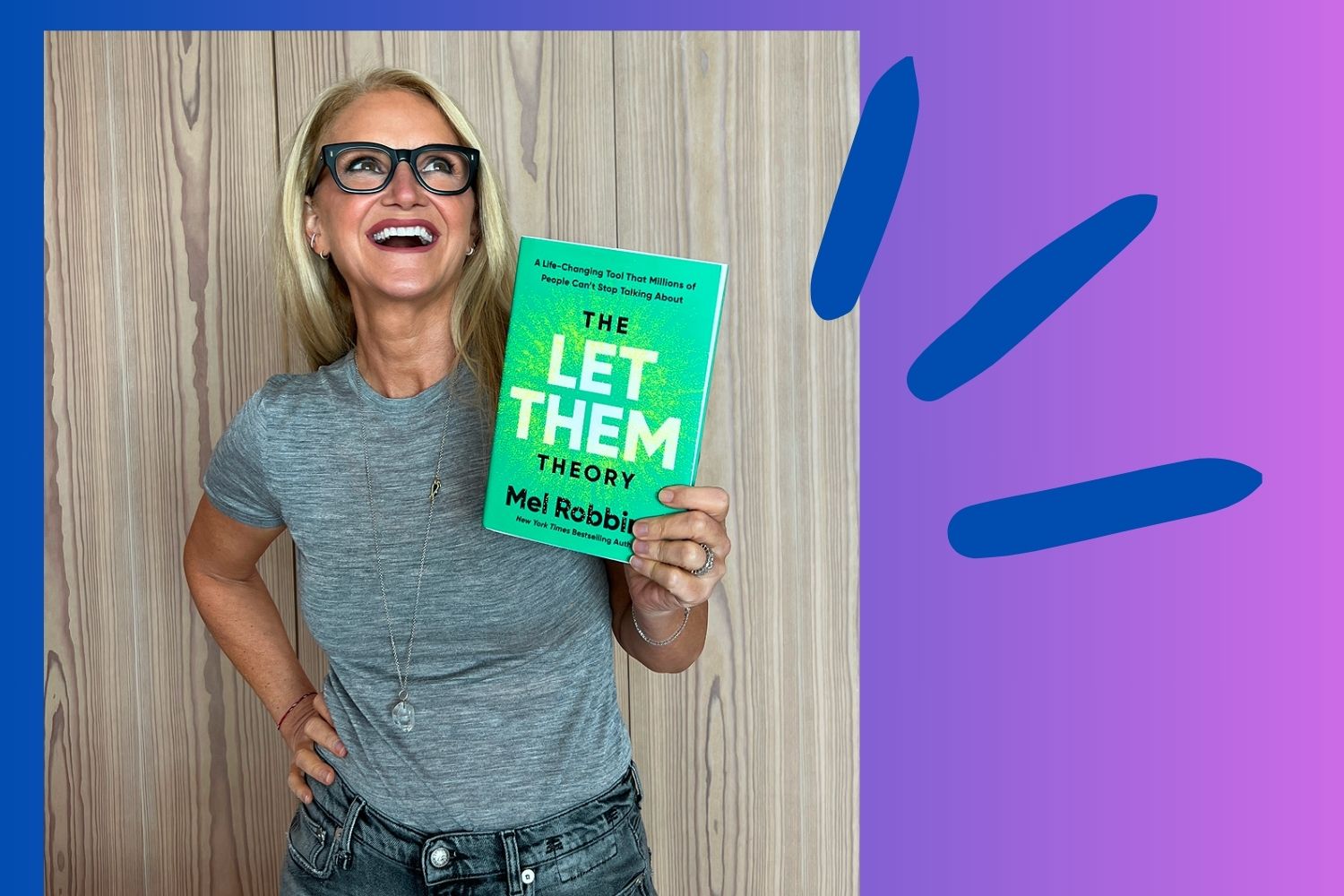
Curious about conscious uncoupling? “Nesting” co-parenting is on the rise for good reason
This is an edited except of Nesting After Divorce: Co-Parenting in the Family Home by Beth Behrendt, (Union Square & Co.) on April 11, 2023.
I will forever remember the moment the trajectory of my life changed. He was holding my hand across the table as we sat in the front window of our favorite local pub. It might have looked like a regular date night to a casual observer. But it was not. I was resisting the visceral urge to pull my hand free, and I could no longer look him in the eyes — the negative emotions were too strong. Instead, I averted my gaze to the reflection of the flickering candle in the window, and watched the heavy snowflakes pile up on the streetscape on the other side of the glass.
Then he sighed and said the last thing I expected to hear, “Alright. I’m going to set you free. I’m going to let you go.” I was flooded with relief that we were finally agreeing to end our marriage. Then I was immediately overwhelmed with fear and worry: What was this going to do to our three kids?
How did I — we — get to that moment? Well, a long time ago . . .
Bill and I met and began dating in graduate school at the University of North Carolina at Chapel Hill. We both got jobs in Washington, D.C., after graduation and married a few years later. People still tell us what a fun wedding it was. Within a couple of years, we were enjoying our jobs, renovating a row house in the Capitol Hill neighborhood, and parenting a dog. We decided if we could successfully juggle all that, why not add having a baby to the mix?
Fast-forward 15 years later. We had three young children. A lot of life was good, but it was also stressful. D.C. is an expensive place to have kids. Bill had long commutes twice a day. We didn’t have any family nearby.
We made the radical decision to move to my hometown of Fort Wayne, Indiana, to save money, be near my parents and my sister’s family, and just slow down. We found a sprawling 1949 mid-century modern home in a neighborhood close to a great school. It felt like the perfect place for our children to grow up. Secretly, I hoped a simpler lifestyle and less financial stress would be the help our marriage needed. Things had not been great for a while. Sadly, our ingrained problematic behaviors seemed to have gotten worse with the arrival of children.
My issues? Avoid conflict and full honesty; just hope difficult situations don’t arise ever again. His? Deny depression and anger issues; just assume his natural charm would smooth things over after an outburst. Bill would erupt in anger, and I would unquestioningly placate or even lie to him. We made some short-lived attempts at therapy, but we just couldn’t commit to overcoming our problems. It was easy to get distracted by everyday life and raising three kids.
In the almost 18 years we’d been married, despite ongoing problems, I’d never seriously considered divorce. “Divorce? I would never do that to my children!” I held the close-minded opinion that most divorced people were selfishly putting themselves above the needs of their kids. But now I was beginning to worry that our marriage was hurting our kids more than it was helping them. I was growing convinced that the energy we were putting into the drama of our marriage was robbing the kids of the energy we should have devoted to parenting them. I began to consider that divorce might be the only way.
At the same time, I was racked with guilt that our divorce might cause irreversible emotional damage to our kids. The concerns were overwhelming:
- Would I be able to parent on my own?
- Would other kids at school make our children feel bad about having divorced parents?
- Would the experience set them up to fall into broken relationships themselves?
Our sons were 5, 9, and 12. They fell smack into the age range (between 3 and 13, according to a study by University College London) when divorce is considered to be most harmful to children.
“Kids are resilient,” people always say when it comes to divorce. But anyone who was a child of the old-school approach to divorce (heck, anyone who was a child, really) would probably strongly disagree. Current neuroscience and child development research, such as that done at Harvard’s Center on the Developing Child, indicate that children are not naturally resilient. Resilience is a trait that develops over time, and develops best in a stable, nurturing environment.
I had personal experience of being “from a broken home” when my parents separated for a time while I was in high school. Though they ultimately reconciled, recollections of the period of my parents’ separation still haunted me. The worry, embarrassment, and sense of abandonment I’d felt all those years ago came rushing back to me as I considered my own divorce. I didn’t want to be the cause of those feelings in my beloved children. I hoped with all my heart to do things differently. But how?
I read countless books, articles, and blog posts about how to navigate post divorce dynamics with your children and former partner. But so much of the information about co-parenting seemed outdated: “Dad gets one night a week and every other weekend.” The advice seemed based on contentious relationships and making sure “you” got “your” way. None of it was giving me much hope.
Serendipitously, it was in one of the divorce advice books I was reading that I first encountered the concept of nesting. It was a lightning-bolt moment. This could be the answer!

What is nesting?
Keeping the kids in the family home after divorce, while the parents take turns caring for them; like how mommy and daddy birds fly in and out of the nest to care for the fragile baby birds, who stay put in comfort and safety. Maybe you’re already familiar with nesting because you saw that actress Busy Philipps and her ex, Marc Silverstein, Gwyneth Paltrow and Chris Martin, or Jeff and MacKenzie Bezos tried it as they divorced. But don’t be deterred: Nesting isn’t an option just for celebrities and billionaires. In fact, ordinary people all over the country — all over the world — are finding creative ways to make nesting work for their families.
Nesting has been on the fringes of divorced parenting for decades, but recent factors are leading to a groundswell of interest in this approach. First, changes in attitudes about divorce.
Divorce is not going away, but today’s parents were often children who lived through a traditional, though traumatic, two-home approach to divorce and want to avoid that same fate for their children. Modern parents are more in tune with and aware of the importance of their own — and their children’s — mental well-being. Conscious uncoupling, positive divorce, and cooperative co-parenting are common catchphrases and hashtags on social media these days.
Nesting co-parenting melds the contemporary surge in the positive divorce movement with a panacea for the anxieties of our current lives. These days, especially, families are fraught with anxiety. There’s no denying that the coronavirus pandemic was detrimental to careers, financial situations, and the mental well-being of adults and children. Not surprisingly, the stress associated with the pandemic strained even the strongest of marital relationships. We’re still learning how this fallout will affect marriages and families, but the indications so far are not positive. In late 2021, a MS. Magazine article reported from various sources that divorce filings increased by 21 percent from the first year of the pandemic to the second; a larger percentage than ever before came from couples with children under the age of 18.
But nesting was a brand-new concept to me in 2013 when we were deciding to divorce. I excitedly shared this idea with Bill, who immediately reacted positively as well. “It’s not the boys’ fault we’re getting a divorce,” he said. “Why should they have to suffer the stress and hassle?” We were able to soften the blow of telling them we were divorcing, by explaining in that same conversation, that they would keep staying in their home, just as always.
We hoped that by nesting we could keep the routine of daily life as consistent as possible for our kids and give them continuity as we figured out what divorce would mean for our family. We knew that divorce would bring changes. We just didn’t know yet what kinds of changes or how they would play out. We hoped that if the kids’ day-to-day life didn’t feel that much different, we could temper the fear and uncertainty of what was ahead.
Once nesting was on the table, the floodgates of creativity opened — as opposed to the traditional approach, which had made me feel that doors were slamming shut and options were being taken off the table left and right. Even though the divorce process itself was far from fun, figuring out how we could make nesting work for our kids was, and continues to be, a rewarding challenge. The idea of nesting also gave me hope that some of the many good things about our marriage could carry on for the good of our children.
For example, Bill and I both were and are close to each of our families. We enjoyed spending time with them, sharing traditions, and learning about the histories and memories of the older generations. We also had a strong commitment and attachment to our family homes. Each of our homes, first in D.C., then in Fort Wayne, had been given as much care and attention as we could offer — they were almost like members of the family. Lastly, Bill and I had always been good at tackling big projects together (Think home renovations and three children). We enjoyed creative and organizational challenges (Did I mention we met in graduate school for library science?). Nesting could allow us to continue giving our energies to these things we enjoyed — and were good at—all for the benefit of our children.
We have found so many other positive outcomes from nesting. At the top of my list would be:
- Kids don’t have the stress and anxiety of going back and forth between two homes.
- Parents don’t have the stress and time expenditure of managing the children’s lives between two homes (no driving to another house to get forgotten items!).
- It’s cheaper to maintain one family home as opposed to setting up and maintaining two homes large enough and sufficiently stocked for the children (who may only spend 50 percent of their time at either place anyway).
- Less stress, more time, and more money allow each parent greater opportunities to pursue their own careers and interests.
We began nesting in 2014. The logistics have evolved over time, but we are still at it today. Our oldest is a senior in college, the middle one is looking forward to beginning college in the fall, and the youngest is in eighth grade. We have been through a lot of parenting stuff since we started down this path! And a lot of personal stuff. My ex has recently remarried, and I am engaged. We each live with our significant others when we are not in the nest for our parenting time.
I can honestly say that nesting is one of the best, if not the best, decision I have made in my life — for my children, for myself personally, for both my ex and me as parents, and for our future as a family. I believe one of the most important responsibilities of a parent is to set your kids up for success in life. I’m hopeful that by experiencing their parents’ willingness to make the best of a difficult situation through creativity, flexibility, and hard work, our kids will value these skills and apply them to any of the challenges that life will undoubtedly throw their way.
This is just a small slice of Nesting After Divorce: Co-Parenting in the Family Home. Order the book here on Amazon or here on B&N.com.



